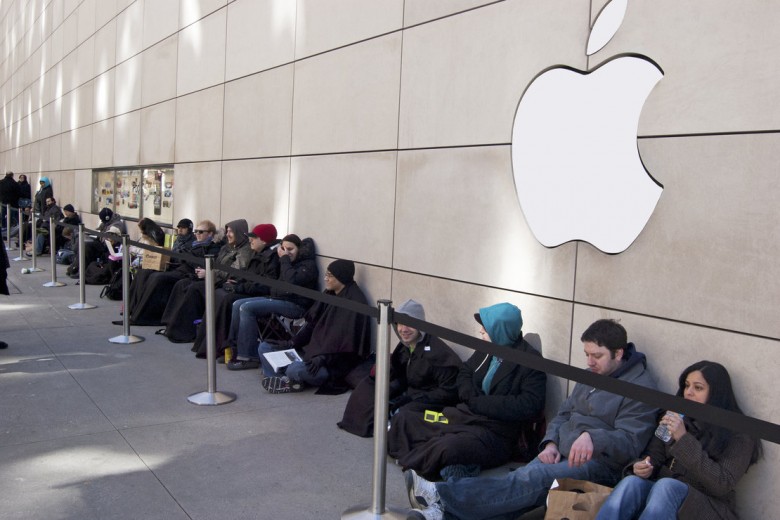What brands are you most loyal to? That question came up in conversation with my coworker, and I had to stop to think. Immediately, my answer was Heinz. I grew up in Pittsburgh, where pre-merger Heinz was headquartered. Growing up, a lot of my friends’ parents worked at Heinz, all the restaurants served Heinz, it was the ketchup at school, at home, at everyone’s houses. Even now, I don’t think I could name a single childhood friend or family from Pittsburgh that doesn’t use Heinz. The thought of using anything else feels blasphemous; I’ve been known to make a face when someone presents me with a lesser brand (I won’t name names, but you know who you are).
I’m deeply loyal to the Heinz brand. I will never, ever find myself picking up some other brand off the shelf at a supermarket. Heinz has won my brand loyalty, through its ubiquitous nature during my formative years and out of my continuity in using it from childhood to adulthood. Heinz loves a customer like me, one that will pay whatever price for their brand, no matter whether there are cheaper alternatives.
How Parity Effects Brand Loyalty
This kind of loyalty is what brands dream of: a customer who will pay any price for their product, advocate for its use, and who will ensure that those around them will use the product. This high level of loyalty is fairly uncommon among brands, especially those with high levels of parity. When a brand has high parity, the consumer perceives that the differences between different brands of the same type of product are small. Take, for example, toilet paper. Regardless of the name on the packaging, all toilet paper serves the same function, and there are really no major differences between brands. Thus, the consumer looks for another way to differentiate among brands.
Price is the largest factor in this equation. Sticking with our toilet paper example, we’ll place you at a supermarket where there are two brands of toilet paper available: A and B. You’re familiar with both products, you’ve seen their ads on TV or in a magazine, and you know that they’re roughly the same. But brand B is on sale this week and costs $1 less than brand A. Nine times out of ten, you’ll select brand B. If you have no strong affiliation or loyalty to either brand A or brand B, price is your motivator, and even though the savings are relatively small at only $1, it’s enough to sway you.
But this affiliation is weak. If you go to the same store in a week to buy more toilet paper, if brand A is on sale you’re likely to choose A over B, even though you were just affiliated with B. The laws of supply and demand have huge influence over pricing for products, as well as the size of the corporation and the sway they have over retailers and their distribution channels. In a startup or small business, brand loyalty becomes even more significant.
Your decision to price your product at market value or at your closest competitor’s price may or may not beat other similar products on the market. Brand parity is also difficult to overcome as a way to increase sales. Plenty of entrepreneurs think that their product is better than any version of the same product on the market, or that it has some fundamental difference that makes it different.
It’s Not What You Perceive But What Your Customer Perceives
However, brand parity relies on perception, and not the perception of the inventor or entrepreneur who has made it their life’s work. It relies on the customer’s perception. If someone cannot see any significant difference between the two, there’s not much you can do, especially if it is a low impact product that people don’t research much beforehand (such as a t-shirt or soda).
Being a good steward of your customer and their needs
Targeting brand loyalty as a segment to increase your sales is wise. Building out a customer base requires stewardship. Customers want to feel as though their needs and concerns are heard, whether that is on social media where they tweet at your business account or if they ask one of your employees for assistance. Responsiveness to customers on social media is key. 42% of consumers expect a response within 60 minutes. 57% expect that same response time at night and on weekends outside of normal business hours.
In order to achieve that kind of responsiveness, you need to be on top of your social media game. Larger startups often have dedicated employees for responding to customers through social media, but that type of capability may be outside of your current capacity. Do the best you can, and do it consistently. Make it a habit to check your social media feeds every single day, ideally multiple times a day, and respond to each and every interaction.
Know Your Customer
Leverage social media to build up your brand loyalty and as a way to raise your brand awareness. Keep the quality of your product high and consistent so repeat customers never have to worry about whether your product is the same or better than the last time they purchased it. Do research about your customers, and find out what makes them choose you. Is it your marketing, your packaging, your employees? What areas can you improve upon?
Focus on what your brand does best, but raise the quality level of any areas that may be lacking. If your social media presence is nowhere near as strong as your brick-and-mortar presence, you need to amp it up. Customers prefer engaging with brands over social media more than any other channels, so having a strong presence is imperative.
Final Thoughts
Brand loyalty is fickle. It’s rare to find that perfect customer who is die-hard loyal to your brand, but they do exist. In that same conversation with a coworker, I couldn’t immediately think of any other brand that I have the same level of loyalty to. But, with stewardship, engagement, and attention, you can become someone’s Heinz.











Pingback: 8 Ways to Foster a Positive Workplace Culture - StartUp Mindset
Pingback: 21 Different Types of Business Models With Examples - StartUp Mindset
Pingback: 3 tools you can use to grow your brand community - StartUp Mindset
Pingback: Destructive vs Constructive Habit-Building Technology: Which Type is Your Startup Building - StartUp Mindset
Pingback: 8 Steps to Start Your In-brand Subscription Box Service - StartUp Mindset
Pingback: Should You Build a Personal or Corporate Brand Online? Here's How to Develop Both - StartUp Mindset